Little boxes on the hillside, little boxes all the same. The 1962 song “Little Boxes” by Malvina Reynolds immaculately encapsulates suburban life and how suburbia is portrayed in films. Everything is a copy of everything else, and the people don’t have distinct identities; their goals are the same, and they lead unfulfilling lives in their conformist bubbles.
This list showcases suburbia on film and explores the common themes and conversations each movie touches upon. These manicured neighborhoods appear seemingly picturesque and perfect on the surface, but there’s more going on underneath. The selected movies go deeper into the psychologically dark and complex underbelly of suburbia that (since its inception in the late 1940s) has served as the springboard for observing the pressing issues in contemporary American society on an intimate and broader scale.
Ordinary People (1980)
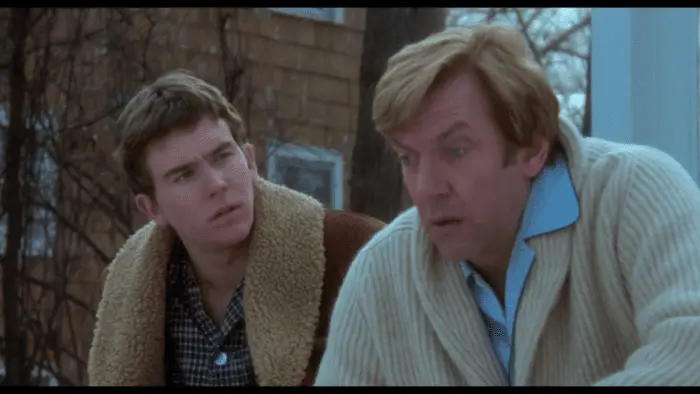
Robert Redford’s Best Picture-winning masterpiece centers on an affluent family’s complete disintegration following the death of their eldest (and favorite) son. In Timothy Hutton’s first-ever role, he plays the tormented younger brother Conrad, who attempts to take his life and must deal with his parents’ (Donald Sutherland and Mary Tyler Moore) refusal to accept the tragedy that has occurred.
Ordinary People is an emotional powerhouse about the lives of these “ordinary” people struggling to come to terms with trauma. Hutton, Sutherland, and Moore go above and beyond in their nuanced performances, and Redford’s seamless direction makes this suburban drama unforgettable.
Heathers (1988)

A staple of ‘80s cult classics, this Winona Ryder and Christian Slater dark comedy offers a biting satirical commentary on high school social politics. With a searingly effective screenplay penned by Daniel Waters, Heathers delves into the disturbingly sinister nature of teenagers in the small, cookie-cutter suburban town of Sherwood, Ohio.
Impeccably-casted Ryder and Slater play the Gen-X version of Bonnie and Clyde, the outcasts of their school, and the unique lingo of the characters is nothing short of iconic. The movie set in the suburbs presents an insightful and unsettling message, making history as one of the best high school films ever made.
Edward Scissorhands (1990)

In Tim Burton’s Edward Scissorhands, the pastel-infused, 1950s-esque suburban Florida neighborhood is the backdrop for this touching movie about an orphaned outsider, Edward (Johnny Depp), with scissors for hands. Scrutinized and judged from the moment the gossipy housewives lay eyes on him, he is immediately feared. When he falls head over heels for Kim (Winona Ryder), things take a dark and violent turn.
Partially based on Burton’s dystopic upbringing in Burbank, CA, the film’s homogenized community becomes fearful of anything other than themselves, and the precise critique on social behavior and societal norms is abundantly presented. It’s truly brilliant that the real horror isn’t Edward but the residents’ dissatisfaction with their uninteresting lives.
SubUrbia (1996)
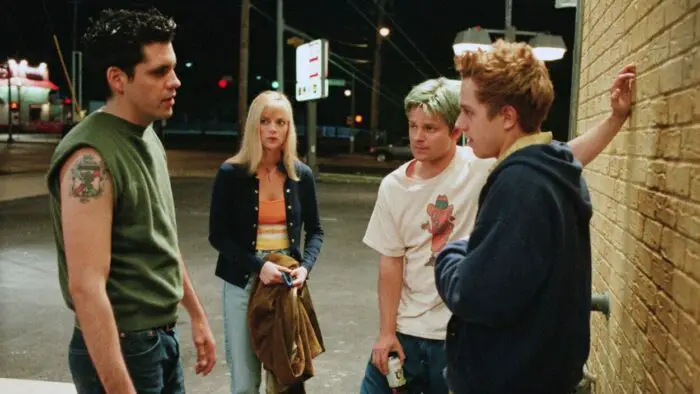
Adapted from Eric Bogosian’s 1994 play of the same name, Richard Linklater’s understated gem centers on aimless 20-somethings who still reside in their hometown of Burnfield, Texas, and are figuring out what to (or not) do with their lives. When their high school friend turned famous musician, Pony (Jayce Bartok), visits during his band’s tour, the group reflects upon and contemplates their grappling with becoming adults.
No other director knows the mundane quite like Linklater, whose films often don’t consist of a plot and follow people having conversations taking place within one day. Unsurprisingly, the movie strikes a profound chord, dealing with topics such as racism, sexism, classism, and varying ideas of success. The cast is terrific—with stand-out performances from Giovanni Ribisi (Jeff) and Nicky Katt (Tim).
The Ice Storm (1997)
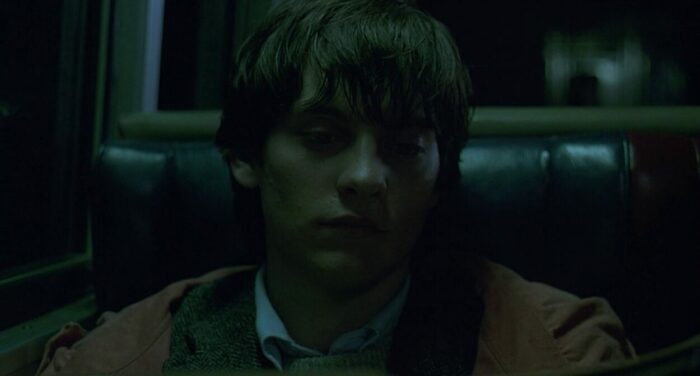
Based on the novel by Rick Moody, Ang Lee’s masterful film about 1970s suburban Connecticut dysfunction provides a compelling narrative surrounding familial relationships and the secrecy that threatens to tear them apart. To make matters more intriguing, an impending ice storm is on its way (serving as a metaphor), bringing buried feelings and repressed emotions to the surface.
These miserable people are frozen in place, discontent with everything about themselves and their lives, and incapable of basic human communication. Employing sociopolitical details about 1973 American society in the background speaks to the innate darkness of the world and that of New Canaan. Suburbia on film feels claustrophobic and inescapable and Lee captures that incredibly well.
The Virgin Suicides (1999)

Sofia Coppola’s visually stunning and captivating aesthetic vision of Jeffrey Eugenides’ 1993 novel hones in on the dreariness of mid-1970s suburban Detroit, told from the vantage point of the boys who live on the same street as the Lisbon sisters. The catalysts for the tragic sisters’ sequential suicides begin with the youngest, Cecilia (Hanna Hall), who takes her life.
As the film progresses, the strict supervision of the girls’ overly religious mother and indifferent father zaps any semblance of enjoyment or optimism in their young lives, ultimately leading to their collective demise. The movie demonstrates how isolation and depression manifest in a suburban upbringing and is yet another example of parental figures clueless to what their children are thinking, feeling, and going through…until it’s too late.
Donnie Darko (2001)
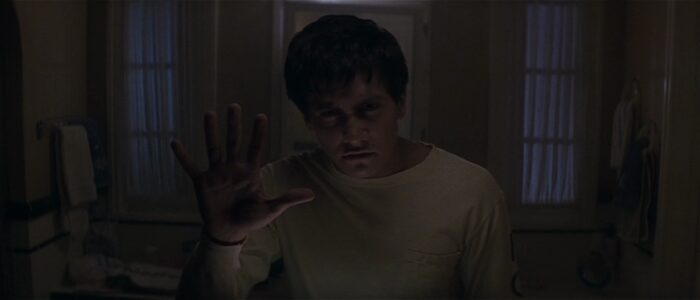
Jake Gyllenhaal’s incredible performance as smart-mouthed teen Donnie Darko in Richard Kelly’s trippy time travel film put him on the map. Set in the suburban town of Middlesex, Virginia, in 1988, Donnie experiences a near-death accident that prompts him to evaluate the meaning of life and love. He also gets the keys to the universe, discovering that he can alter time, space, and destiny.
Donnie Darko is a powerful movie that interweaves motifs about fate and the paradoxical exploration of humanity into life’s inevitable complexities and messiness. Kelly was only 25 when he made his cinematic mark with an ambitious debut feature that continues to endure with its cultish, hypnotic appeal.
The Chumscrubber (2005)
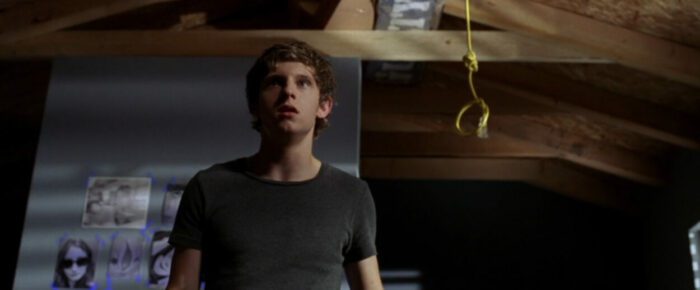
Directed by Arie Posin, this dark satire takes place in the suburban community of Hillside, where high school students are supplied “feel-good pills” to pretend they are happy. However, things take a twisted turn when boredom and brutality ensue, and the protagonist, Dean (Jamie Bell), wrestling with his best friend’s suicide, must rescue a boy who was accidentally kidnapped.
While the themes of emotional repression and disconnect in the suburbs are not new territory, Posin explores the material with insight, and intellect, and the stellar performances by Bell, Allison Janney, Glenn Close, and Ralph Fiennes are not to be overlooked.
Vivarium (2019)
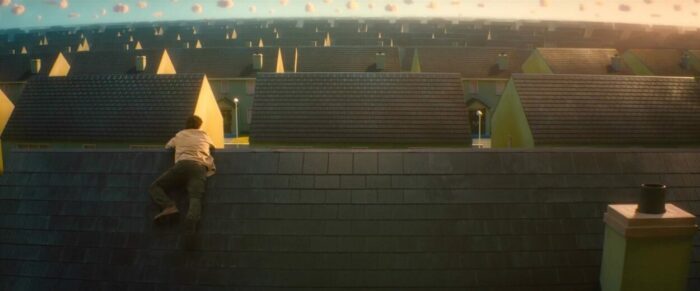
Lorcan Finnegan’s sci-fi horror movie conveys suburbia as a hellish labyrinth that can’t be escaped. A young couple (Imogen Poots and Jesse Eisenberg) are in search of their dream home, but when they try to leave the neighborhood, they discover that it’s impossible.
Vivarium treads themes and tropes that we’ve seen countless times before (and, the vanilla protagonists are pretty dull). However, Finnegan proposes a thought-provoking perspective on the insidiousness of the suburban lifestyle and the nightmarish trap of domestic partnership and parenting.
These films present suburbia as a place where people are lonely, grieving, and floating through their lives. From a philosophical viewpoint, suburban-set movies are about the futility of existence, and what it means to be here on this planet. Suburban communities are designed to make their residents feel safe and comforted, but, in reality, that does more harm than good, as they are out of touch with the society around them.
Suburbia shelters people from the harsher truths of the world, and upper-middle-class and wealthy families lead messy, imperfect lives underneath a polished demeanor and immaculate household. In addition, pushing against conformity and discovering one’s distinct identity are aspects of suburban protagonists who yearn to break free from the mass ideology surrounding home life, marriage, and traditional expectations.


